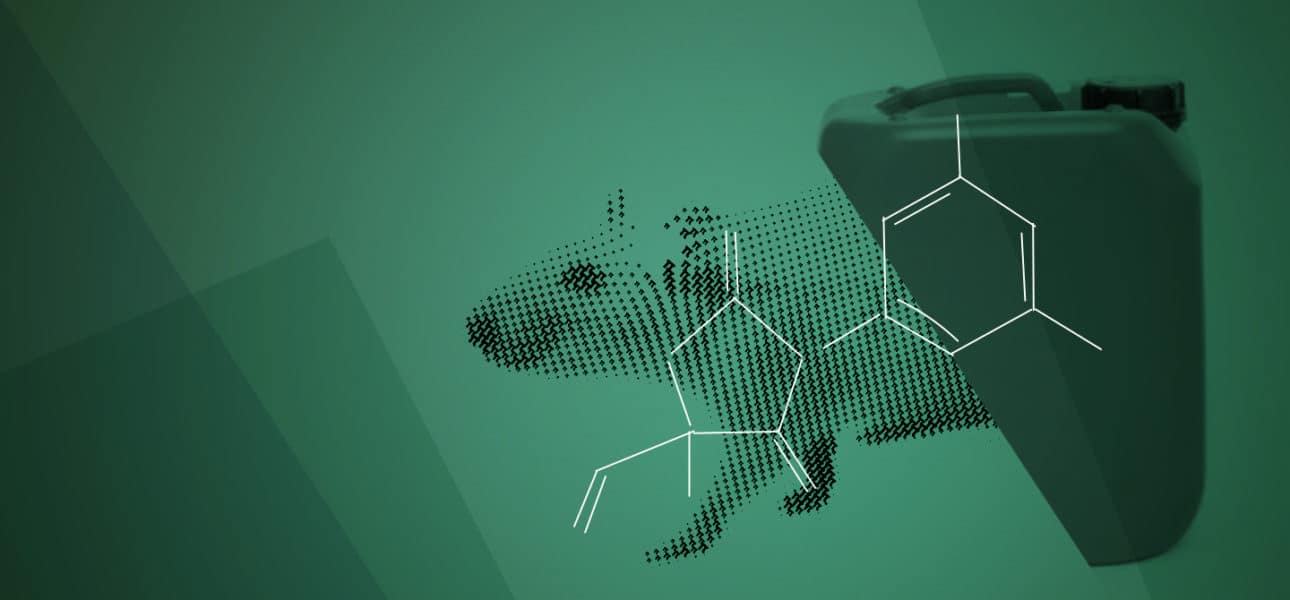Epigenetics shows that our environment can influence gene expression. Is this also the case for exposure to toxic molecules? This apparently simple question is far from simple and is forcing regulatory authorities to rethink their methods while public concern grows.
We have suspected for about ten years now that pollution affects the epigenome. It all began with the observation of changes in epigenetic marks in gestating rodents after they had been exposed to a fungicide, vinclozolin. More surprisingly, these alterations could be observed in their offspring even four generations later, i.e. in animals that had never been exposed to the pollutant12. This work has been the subject of much debate. How important are these results since they involved exposure to very high doses? More than 15 years after publication, these results remain valid in mice, but extrapolating them to humans is tricky.
An experimental challenge
It is ethically unacceptable to reproduce a controlled exposure experiment on humans. What is more, in real-life we are exposed mainly to low or medium doses of different biologically active products over a lifetime. The question of the transgenerational impact of exposure to pollutants as observed in rodents therefore remains difficult to answer in human species for the moment. Epidemiologists are thinking about how to set up a cohort to look for such an effect. In theory, this is possible, but to measure a statistically significant signal, we would have to study a large number of people who were exposed to a specific pollutant during the perinatal period and whose descendants were not exposed to this pollutant…
Can we identify the molecular mechanics involved? Here again, the research is complex. There are several hypotheses. The first suggests that toxic substances modify metabolism. This would have an impact on how epigenetic marks appear, for example by modifying the availability of methyl group donors, leading to a disruption of the frequency of DNA methylations. Another hypothesis focuses on the role of mitochondria and thus of respiration. This intracellular organelle3, whose main role is to produce energy using oxygen from the air, is at the crossroads between several metabolic pathways and could thus influence DNA methylation mechanisms. These two mechanisms could affect how cells function when exposed to pollutants.
Another much-discussed topic is how the memory of exposure to pollutants is carried over from one generation to the next, or the transgenerational inheritance of epigenetic changes caused by pollution. In the past, we were certain that epigenetic marks were deleted when gametes were formed. The oocyte that gives rise to the embryo was therefore described as lacking the epigenetic history of both parents. But is this eradication complete? Some researchers assume that certain marks can be passed on to the next generation. This hypothesis, which would go beyond foetal exposure to understand the transgenerational transmission of certain epigenetic alterations, is currently under study.
A challenge for society
This type of research, which is essential if we are to document the phenomenon using real-life data, is extremely difficult to perform on humans and has not yet fully demonstrated the existence of a causal link. We know about some mechanisms, such as those in which components of cigarette smoke alter cell signalling even during passive smoking. But a one-off demonstration is not enough to answer the global question. It is therefore crucial to undertake these large cohort studies, although they are risky in terms of producing significant results.
There is also the question of making the link between exposure to pollutants and how epigenetics is altered. This question is the subject of work that I am carrying out with my colleagues in the Environmental Toxicity, Therapeutic Targets, Cellular Signalling and Biomarkers laboratory (T3S, Inserm/University of Paris). We are trying to establish the link between the “exposome”, which is the combination of all pollutants and stressors (physical, thermal, psychosocial, etc.), to which an individual is subjected and the potential alterations of his or her epigenome [the sum of all epigenetic modifications on the genome]. All this work obviously raises questions about the epigenetic safety of manufactured products. While these must be considered safe by the regulatory authorities if they are to be sold on the European market, from the point of view of epigenetics, certain signals, though suspect, are not taken into account when evaluating specifications. This is the case for the effects of combinations of pollutants, but also for the mitochondrial effects of these products. Regulatory science must evolve by rapidly integrating the reliable data produced by academic research.








